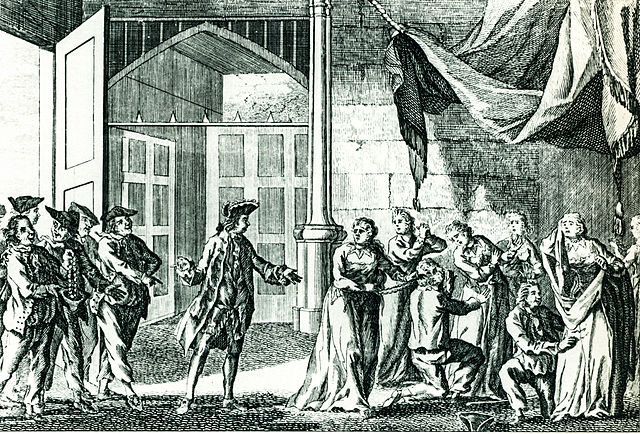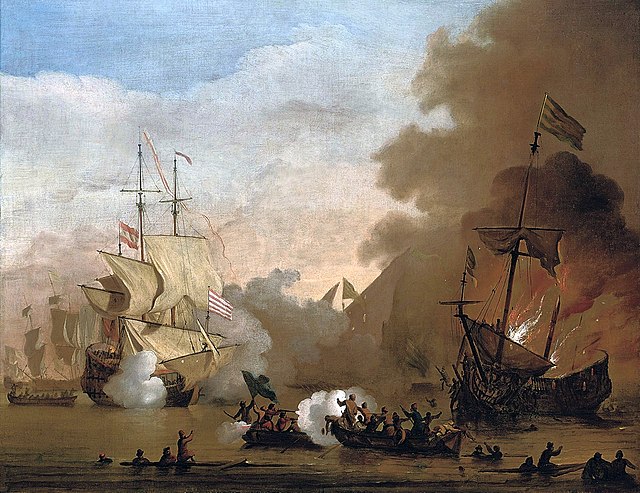The Sea Dogs were a group of English privateers and explorers authorised by Queen Elizabeth I to raid England's enemies, whether they were formally at war with them or not. Active from 1560 until Elizabeth's death in 1603, the Sea Dogs primarily attacked Spanish targets both on land and at sea, particularly during the Anglo-Spanish War. Members of the Sea Dogs, including Sir John Hawkins and Sir Francis Drake, also engaged in illicit slave trading with Spanish colonies in the Americas.
Statue of Maria Pita at Coruna
Image: John Davis (sailor)
Image: Gheeraerts Francis Drake 1591
Image: Sir Humphrey Gilbert Compton Castle
A privateer is a private person or vessel which engages in maritime warfare under a commission of war. Since robbery under arms was a common aspect of seaborne trade, until the early 19th century all merchant ships carried arms. A sovereign or delegated authority issued commissions, also referred to as letters of marque, during wartime. The commission empowered the holder to carry on all forms of hostility permissible at sea by the usages of war. This included attacking foreign vessels and taking them as prizes and taking crews prisoner for exchange. Captured ships were subject to condemnation and sale under prize law, with the proceeds divided by percentage between the privateer's sponsors, shipowners, captains and crew. A percentage share usually went to the issuer of the commission.
East Indiaman Kent (left) battling Confiance, a privateer commanded by French corsair Robert Surcouf in October 1800, as depicted in a painting by Ambroise Louis Garneray.
Woodes Rogers' men search Spanish ladies for their jewels in Guayaquil, 1709
An action between an English ship and vessels of the Barbary corsairs
Bermuda Gazette of 12 November 1796, calling for privateering against Spain and its allies during the 1796 to 1808 Anglo-Spanish War, and with advertisements for crew for two privateer vessels.








